Editor’s note: Pete Denman and Barbara Gassaway are client services manager and president, respectively, at Observation Baltimore.
The demand for in-person research is on the rise. While that has opened the door for optimism, it will be important to remember that COVID-19 is still at the forefront of consumers’ minds. We help Observation Baltimore’s clients who have conducted in-person research handle this familiar, yet new setting: Conduct your group with PPE in place and in a way that makes the most concerned participants feel comfortable.
In order to assess how comfortable consumers are with in-person research, Observation Baltimore polled 2,150 respondents from our mid-Atlantic database of fresh prospects. Observation Baltimore’s survey provided patterns; however, it allowed participants to skip questions they did not wish to answer.
Primary insights
Vaccination status is the biggest factor in determining likelihood of in-person research participation in the mid-Atlantic. In our poll, all unvaccinated participants indicated they do not feel comfortable with in-person focus groups and almost half of all unvaccinated respondents said they do not feel comfortable with IDIs.
In today's climate would you feel comfortable participating in [an in-person individual research interview] / [a small, multi-person focus group]?
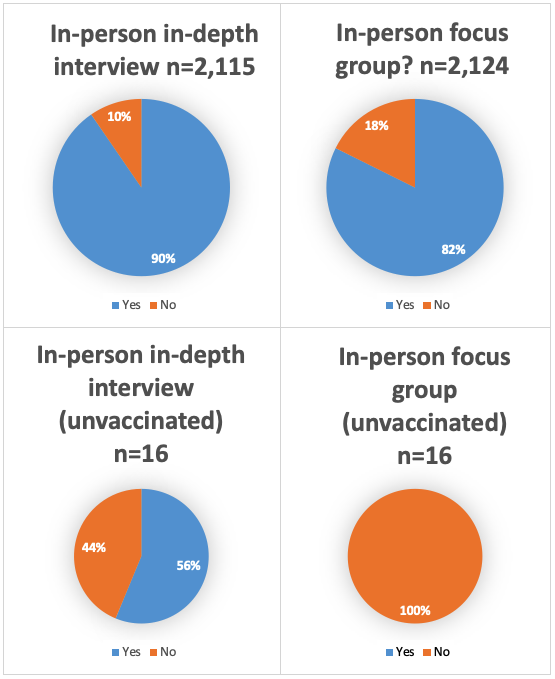
It should be noted: Even among those who are comfortable with both in-person interviews and focus groups, concerns about safety continue to be expressed. A lack of COVID protocols may cause anxiety in any respondent.
Eighteen of the 28 participants that selected “Other” cited concerns over “a loved one in the household” that is either “immunocompromised” or “unvaccinated.”
Which factors make you feel uncomfortable about participating in in-person research? (Select all that apply) n=369
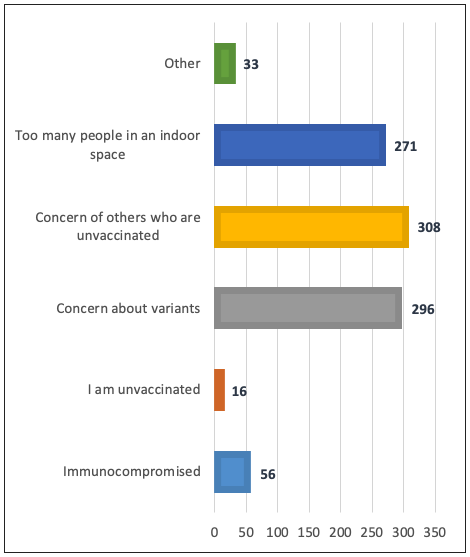
To mitigate any reservations about participating in in-person research, proper precautions should be established. Requiring masks, socially distanced rooms and smaller group sizes are all inexpensive and simple ways to increase show rates, ease concerns and lead to greater participation.
What precautions would make you feel more comfortable about participating in in-person research? (Select all that apply) n=2,066
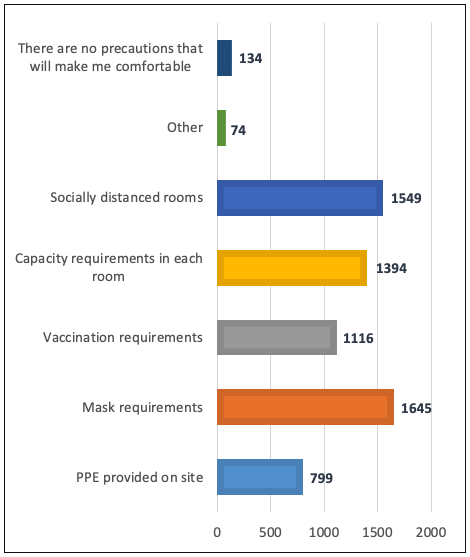
When looking at ethnicity as a factor, willingness to participate in in-person research remains primarily constant throughout.
Which of the following ethnicities do you identify with/ Are you comfortable with in person Focus Groups/IDIs? n=1,393
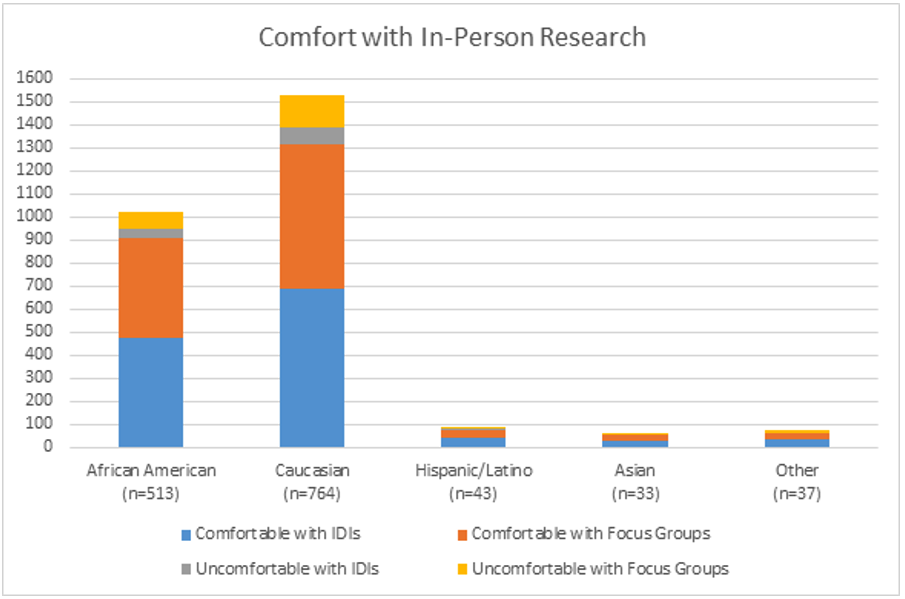
Additionally, while an overwhelming majority of participants from each gender feel comfortable with both in-person IDIs and focus groups, women are more reluctant than men overall.
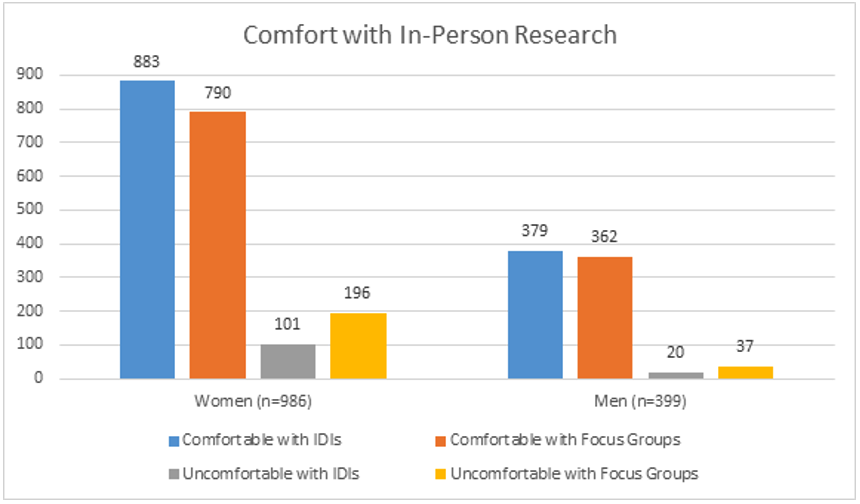
Additional information such as household income, age and marital status is tracked by Observation Baltimore. As distinguishable correlations did not emerge in likelihood to take part in in-person research, these demographics are not included in this report.
Observation Baltimore’s experience
Throughout the pandemic, Observation Baltimore has held several in-person interviews and focus groups. During this time it has become clear that show rates are much more unpredictable than pre-COVID. In-person research is much more likely to experience last-minute dropouts. We anticipate this drop is attributed to increased COVID-induced anxiety as the day of research inches closer.
Observation Baltimore’s solutions are to over-recruit for in-person research, remain agile (and be extra kind), alleviating COVID-induced anxiety by providing on site PPE, socially distanced rooms and smaller group sizes.
